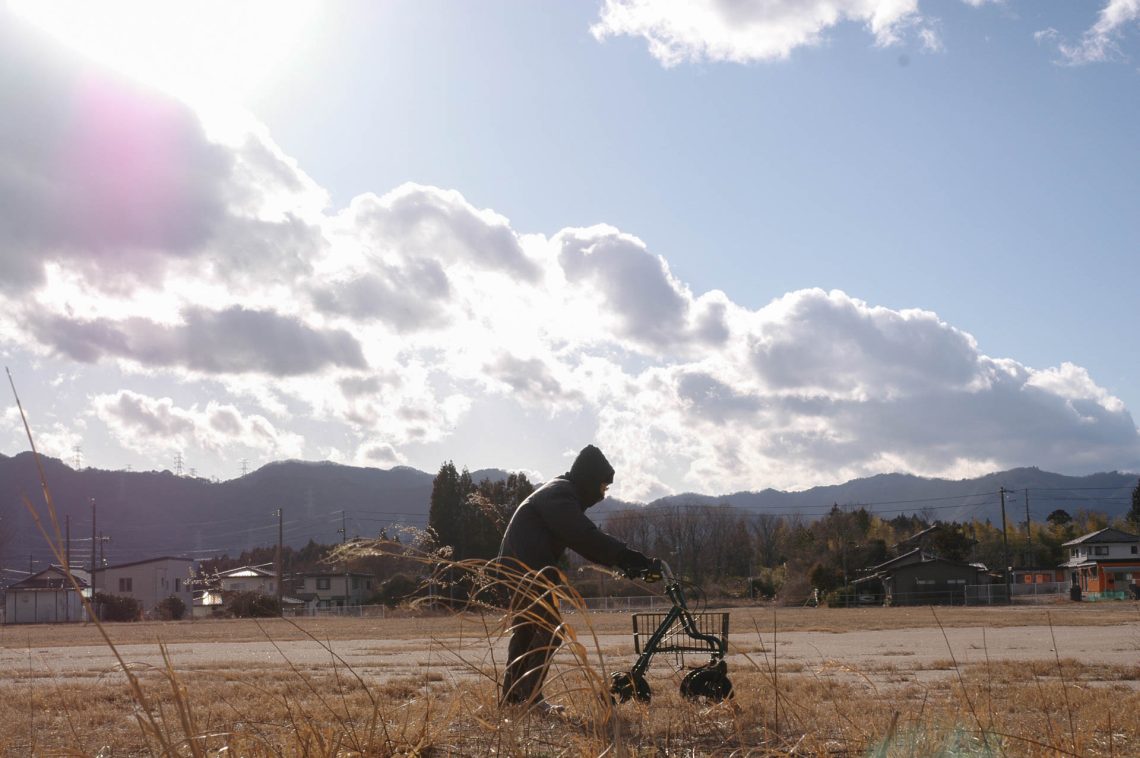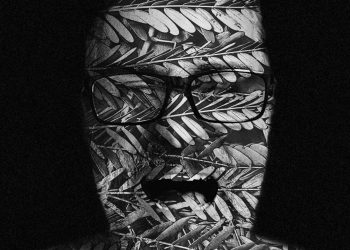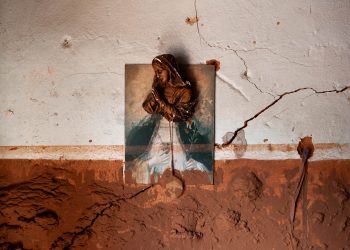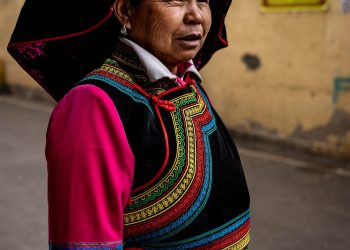For him, then just a student, the Fukushima nuclear accident was something that happened beyond the screen—inside the internet.
In 2011, a massive earthquake struck northeastern Japan, triggering a tsunami and the meltdown of the Fukushima Daiichi nuclear power plant. While the disaster unfolded in real life for many, for him, it remained a distant event—mediated through screens and scrolling timelines.
In March 2024, he arrived in Fukushima to spend a year photographing towns in recovery.
But as he stayed amidst streets transformed by redevelopment, he began to feel as if the world had moved on without him. A sense of isolation took root.
His inner collapse spilled into words, and those words guided him in search of subjects to photograph.
The act of following language to discover what to capture with his camera felt oddly familiar—like surfing the web, clicking from link to link, emotion to image.
After each photo, he would return to language—rearticulating his emotions—before heading out again in search of what to witness next.
This cyclical process became a mirror to himself, a quiet unraveling that reshaped how he understood society.
In that process, he reclaimed the self he had abandoned.
And there, within a world in flux, he found something that would not change: the quiet gaze through which he had always observed the world. “This work is a faint but enduring trace of my time in Fukushima.”
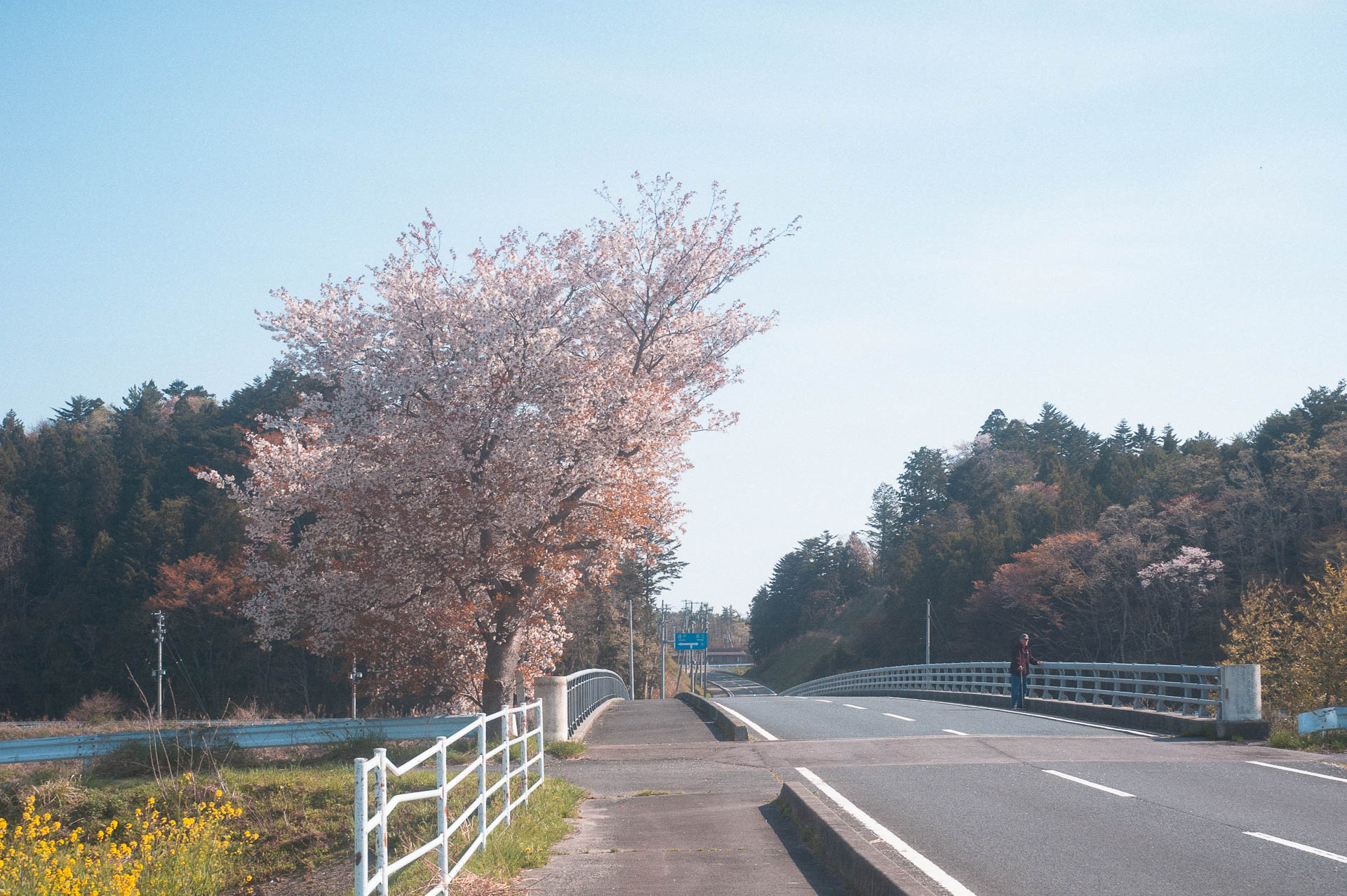
This old man comes to see the cherry tree every spring, walking with his cane. It was planted when he was still a child.
Back then, he thought planting it was no fun at all.

I asked her, “What places hold a special place in your heart?”
She took me to her grandparents’ house.
All I could see was the horizon.
The house was lost in the 2011 disaster, and the area has since been transformed by redevelopment.
She said, “When I’m older, I’ll probably forget them.”
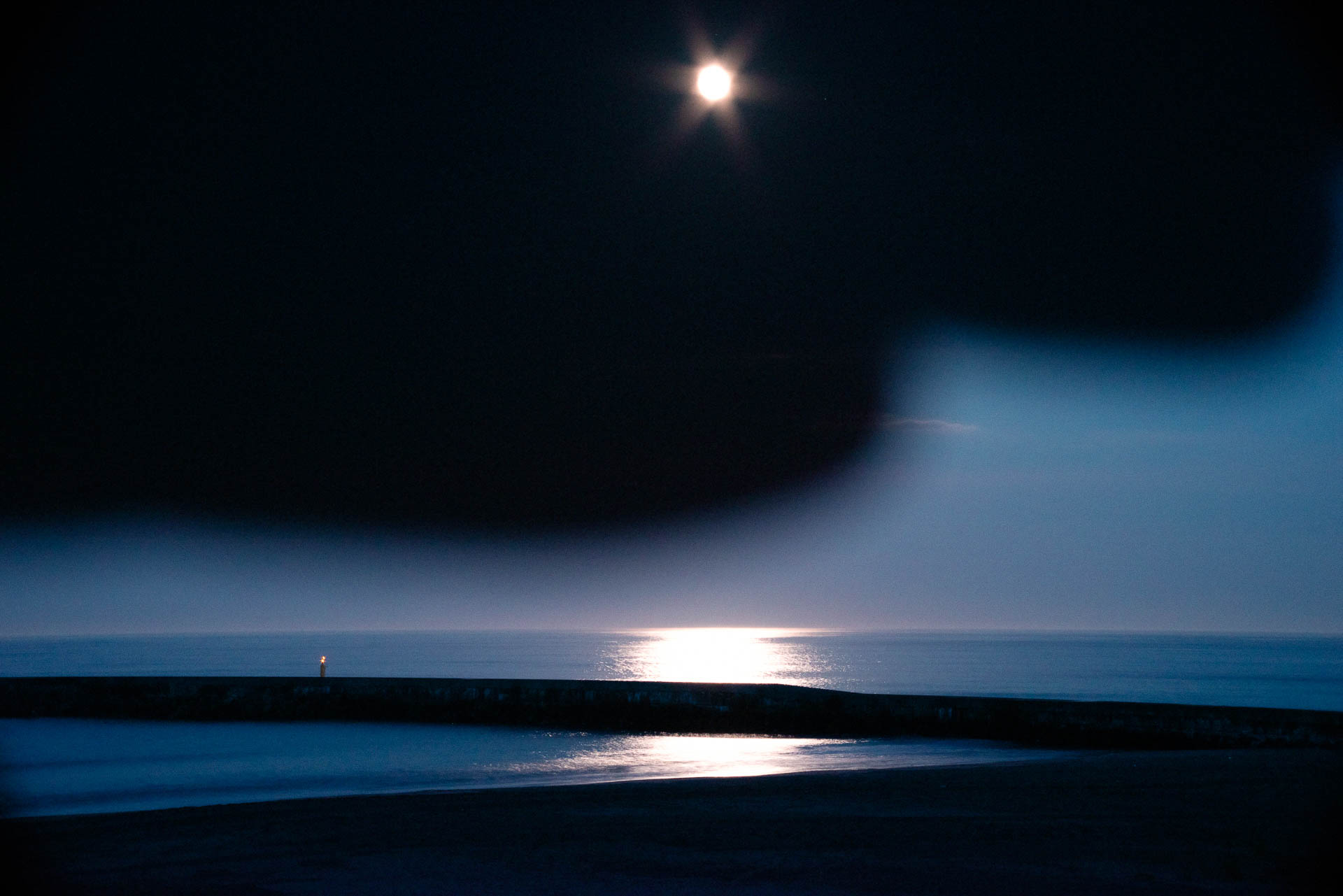
I once asked a friend who works in radioactive decontamination, “What do you do when you have free time?”
He said, “I go to the sea and watch the moon.”
One night, I photographed a full moon.
But I mishandled the camera, and the result looked as if day and night existed at the same time.
I laughed at the surreal image, while he, who prefers simple and grounded scenery, remained quiet.
Having lived through the disaster of 2011 and now facing danger each day in his work, he seemed tired of fiction.
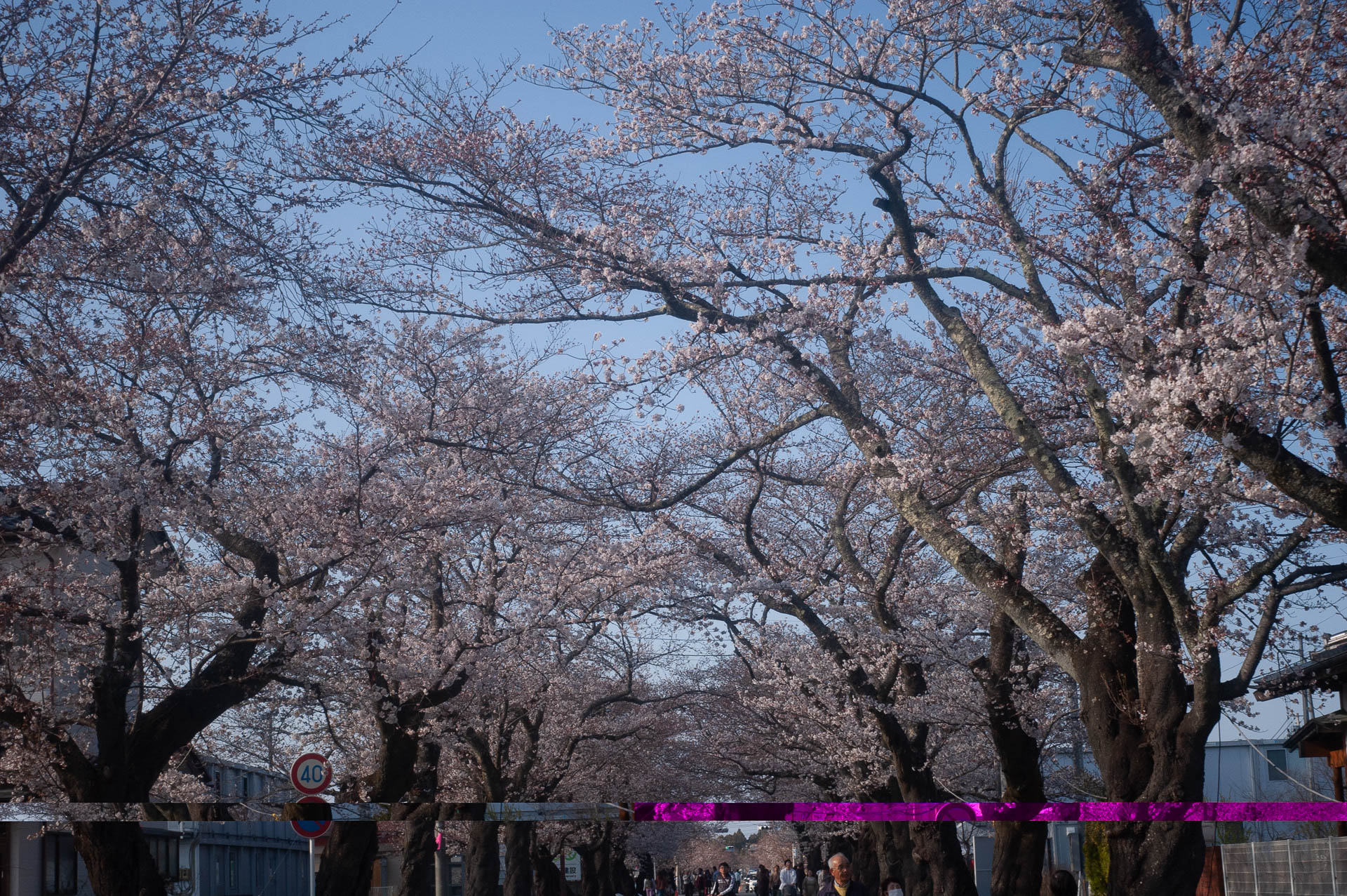
In a town where radioactive decontamination had been completed, the cherry trees came into full bloom.
They were stunning—but I couldn’t stop thinking of something a local resident once said: “The most beautiful cherry blossoms were the ones that bloomed when no one was here, before the decontamination was finished.”
I will never be able to see those blossoms he remembers.
In the photo I took, a single pink line of digital noise—caused by a camera sensor malfunction —ran straight from right to left across the image.
That line seemed to reflect the dissonance between the landscape we see now and the one preserved in people’s memories.
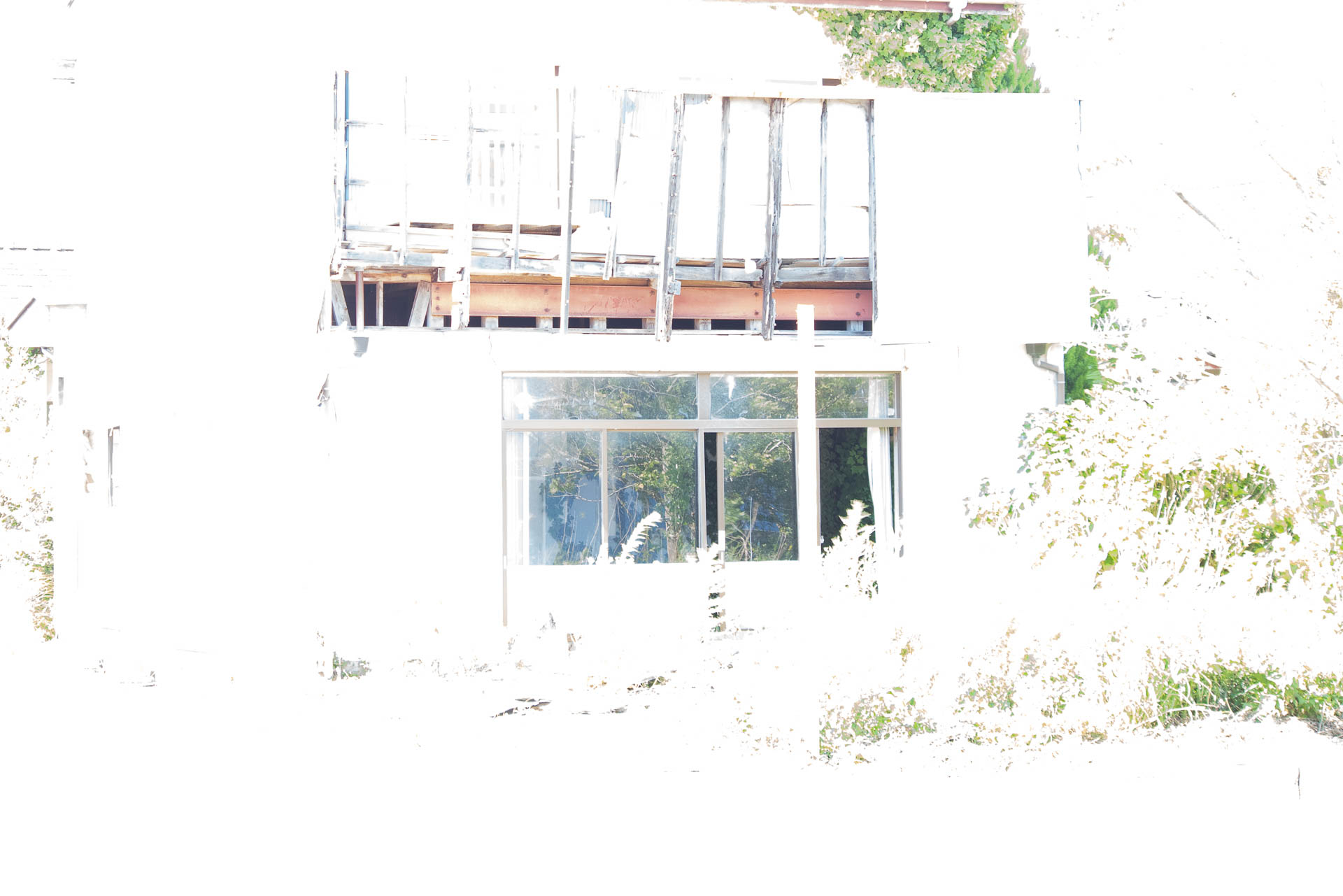
Along the coast of Fukushima, some homes still remain untouched by decontamination. I pointed my camera at one of these houses, intending to document it.
But I had set the camera incorrectly—the exposure was adjusted for the dark interior. As a result, the sunlit exterior was blown out in white, but instead, the trees growing inside the house came into focus.
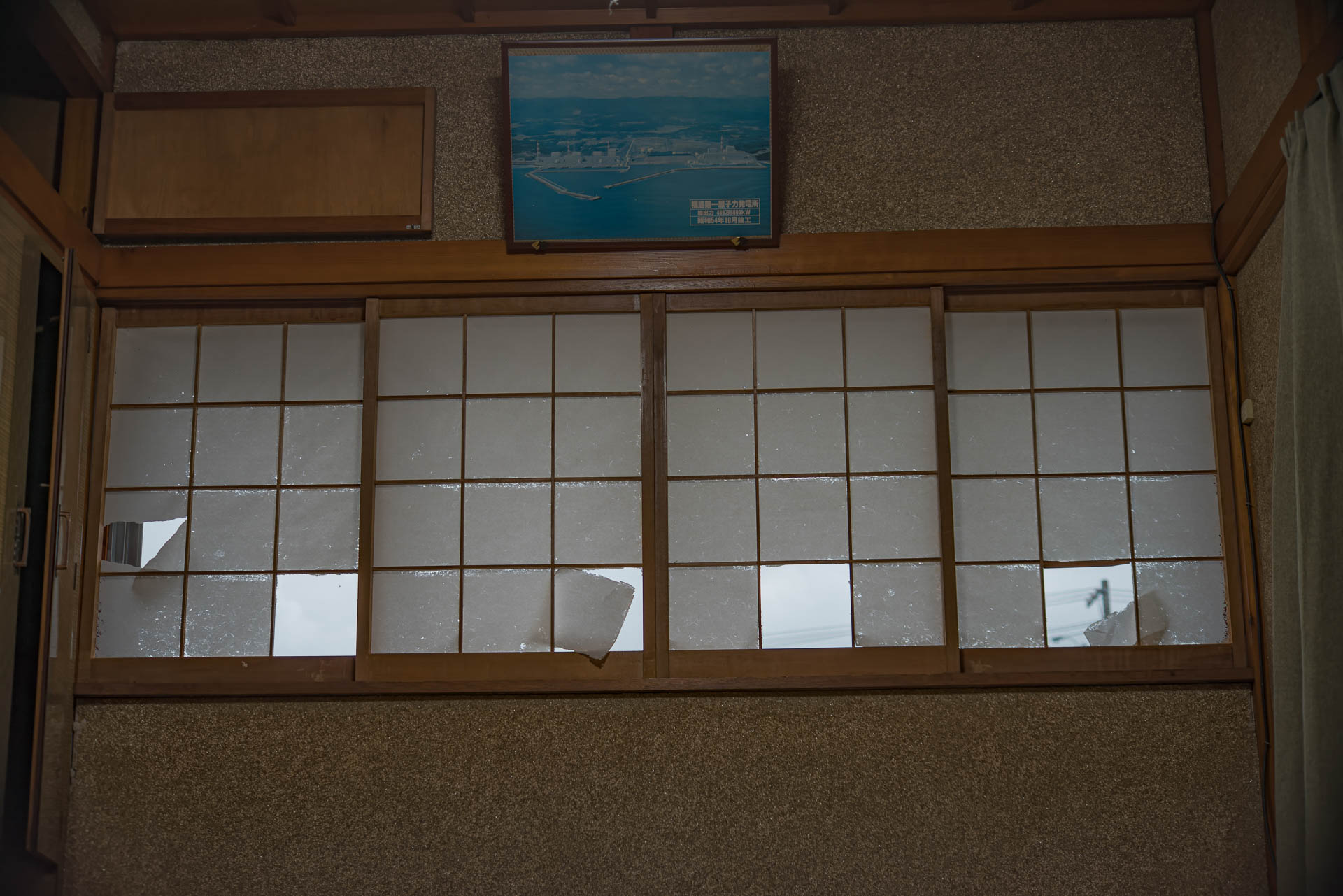
The owner of this house once worked for a company connected to the electric utility. In many Japanese homes, it is customary to display portraits of ancestors.
Here, alongside them, hung a framed aerial photograph of the Fukushima Daiichi Nuclear Power Plant.
From the 1970s through the 1980s, nuclear power was seen as a symbol of hope and modernity.
For many in the town, the plant was a familiar and even cherished presence.
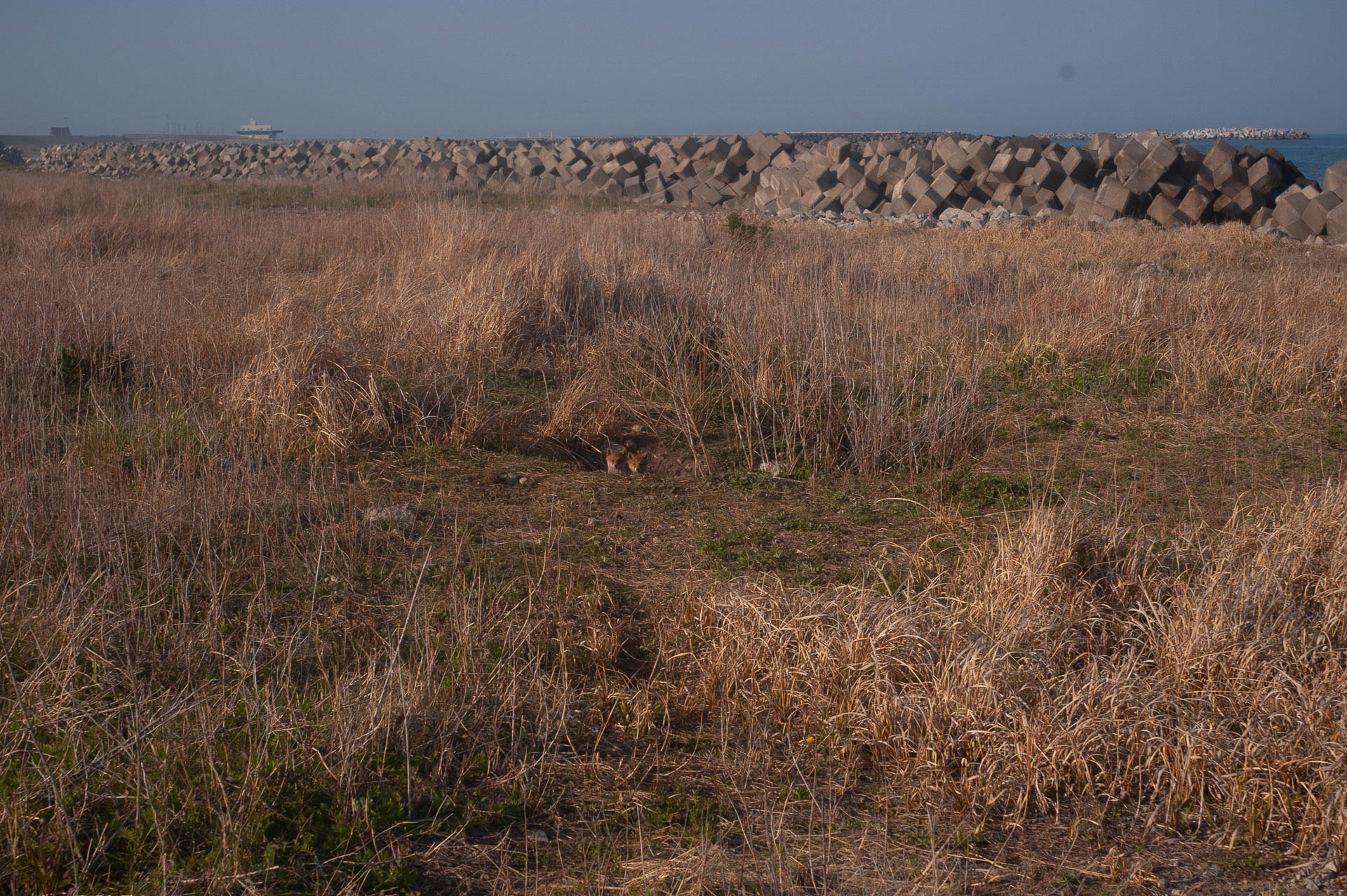
In an area designated for redevelopment, a family of wild foxes had made their den. The kits, likely seeing a human for the first time, showed no fear of me.
A few weeks later, I returned to the site—but the foxes were gone.
Perhaps they had believed this place to be untouched by humans,
only to realize that it, too, was part of the human world.

Around the time treated water from the ALPS system began to be discharged from the Fukushima Daiichi Nuclear Power Plant,
I came across a group of men surfing in the sea.
When I spoke to them, they mistook me for a journalist and one of them barked, “Funny, ain’t it? The waves closest to the damn plant feel the best.”
It turned out—they were decommissioning workers.
Men who, day after day, put their lives on the line to dismantle the very site of the disaster.
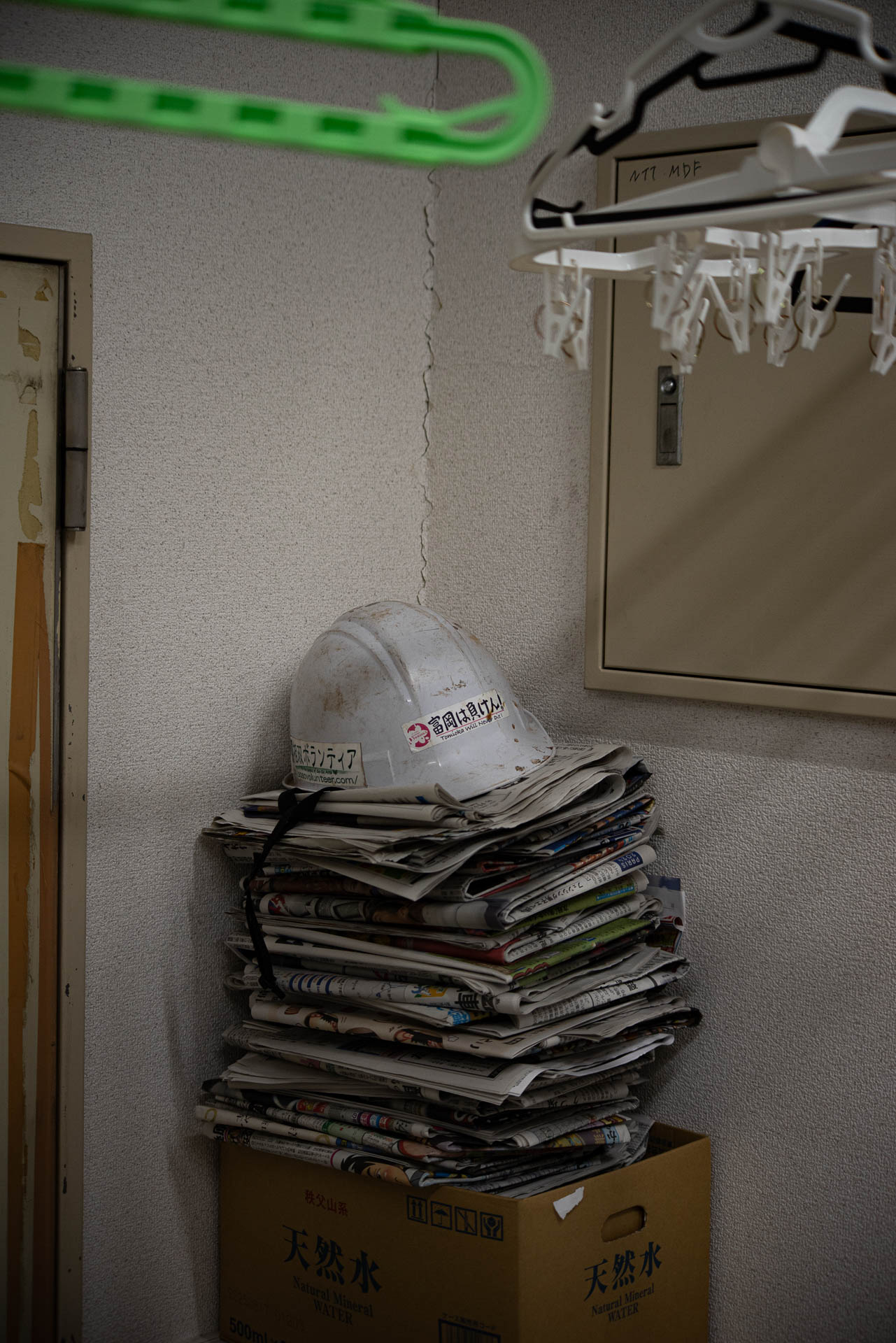
When this town was contaminated with radioactive fallout and much of the world had given up on Fukushima’s recovery, a few held on to hope.
Dressed in protective suits and helmets, they returned to the abandoned streets—not for money, but to rebuild.
They were heroes in a time when ordinary life had collapsed.
But after the decontamination ended, what was needed changed:
not courage, but capability—running a business, managing employees, raising a family. Such “normal” skills are hard to come by in a town long dependent on the nuclear industry.
Now, a helmet—once worn like a badge of honor—sits unused in the corner of an office, quietly watching a new era unfold.
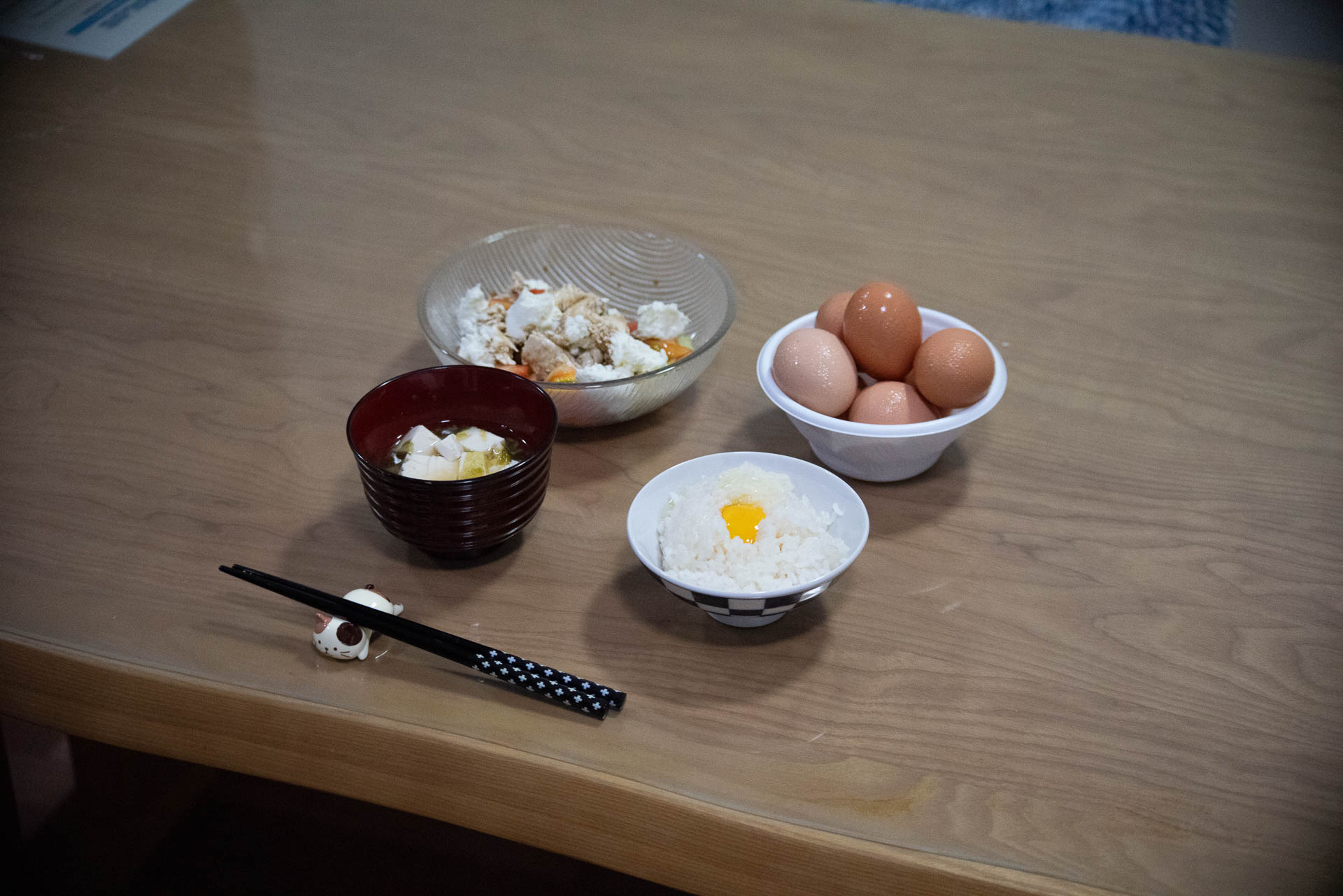
One day, I met a consultant known for pushing through redevelopment projects with little regard for public sentiment—projects funded by government subsidies.
He gave me a box of luxury eggs from a well-known brand, something far beyond my usual means.
I disliked him, but I ate the eggs.
It’s hard to raise your voice against someone after receiving a gift. That’s how I, too, found myself being quietly tamed.
Maybe it’s not just me—maybe we all are.

Along the coast of Fukushima, abandoned fields have been covered with solar panels as part of a large-scale redevelopment plan.
Due to contractual agreements, these panels are effectively locked in place for several decades—
while technically cancellable, doing so incurs penalties, making it nearly impossible to resume farming.
In the name of clean energy, the very resources that once supported local livelihoods are being taken away.
Most people oppose the panels, but a friend once whispered to me, “To me, that endless sea of solar panels looks like a beautiful ocean.”
It’s not the transformation of the land I find most troubling—
it’s how redevelopment quietly makes it harder for people to speak their minds.

She’s a designer. After working in Tokyo, she returned to her hometown around the time the decontamination ended.
On this day, she took me to the beach where she used to play as a child.
She told me how she once nearly drowned there—until a kind older boy from the neighborhood jumped in and saved her.
After the 2011 earthquake and nuclear accident, all the houses in this coastal area were wiped away.
The residents scattered, evacuated to different places. No one seems to know exactly where anyone ended up.
“I wonder where the boy who saved me went,” she murmured.
What she lost wasn’t just a home—it was the gentle fabric of everyday life, and the people who once filled it.

An elderly woman once shared a memory with me.
“When I was a little girl, my mother took me to the sea. I remember watching a ray swim gently along the surface of the water.”
It was long before the nuclear power plant was ever built here.
After the accident, she was forced to leave her hometown and move from one unfamiliar place to another. She never truly felt at home again and struggled to find work.
Hoping to spend her final years in the land she loved, she returned to Fukushima after the decontamination was completed.
The day after hearing her story, I was walking along the beach when I came across a ray lying still by the shore.

He is a painter.
Before the nuclear accident, he had moved to the city, leaving his rural hometown behind. But after the disaster, thoughts of home returned to him more frequently.
One day, he took me to the beach of his memories. The shoreline had changed due to redevelopment, but as we walked along the sand, he began to draw lines with his toes.
Like a child playing, he traced the contours of the beach as he remembered it, saying, “The water used to come all the way up to here.”



